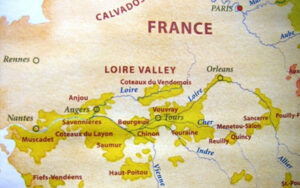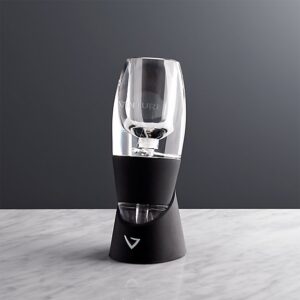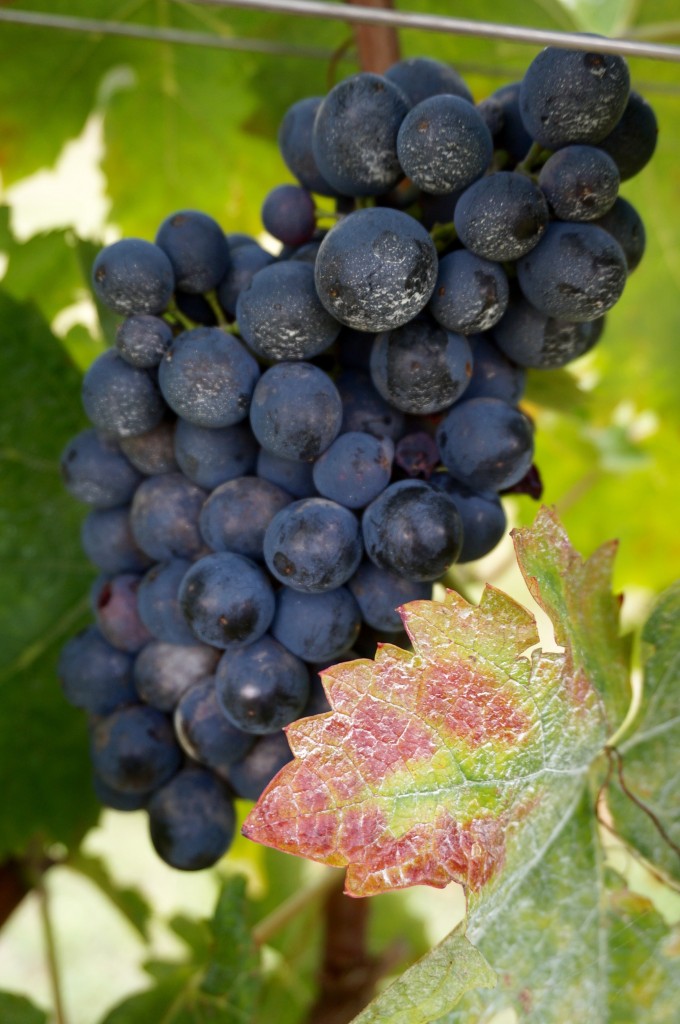I reached out to some amazing women in a Facebook Group I belong to called “She  Podcasts.” I asked them to submit questions they had about wine that they either didn’t want to ask in public or didn’t necessarily know where to go to find the answers. They responded with some great questions. I am sure they are not the only ones with these questions, so I hope that my answers can help some of you learn a little bit more about wine. And please let me know if you have any questions that are not covered here.
Podcasts.” I asked them to submit questions they had about wine that they either didn’t want to ask in public or didn’t necessarily know where to go to find the answers. They responded with some great questions. I am sure they are not the only ones with these questions, so I hope that my answers can help some of you learn a little bit more about wine. And please let me know if you have any questions that are not covered here.
Rachel C. asked: What is the difference between cheap wine and expensive wine?
This is a great question. There is a lot that goes into the production of wine that must be considered when putting a dollar value on the bottle. Generally speaking it is location, aging and time. Let’s start in the vineyard itself. The price of fruit is a large portion of that cost. For example, fruit from highly prestigious vineyards in Napa Valley could go for $10,000 a ton even others are $25,000/ton. That cost is going to increase the price of the bottle you are purchasing. Where the fruit is located in relation to the winery itself can also impact the price of the wine. If the winery is harvesting fruit from all over, that requires time and labor. Requiring the fruit to be trucked a far distance to the winery. That will add to the dollar amount also. The next big impact on the cost of a bottle of wine is how the wine is aged. Wine can be aged in stainless steel, concrete or oak. Each new oak barrel can run the winery between $1200 and $2500. On the lower end of the spectrum, each new barrel will add about $4 to the price of the bottle. Stainless steel may be a large initial outlay to the winery, but since it can be used over and over the cost can be spread out over multiple vintages, the same with a concrete egg. The final major component of the price of a bottle of wine is the time it spends before being released. When a winery holds back wine to age, it requires space and costs money. Wineries want to hold back the release of their wine because time not only changes the taste of the fruit flavors in a wine but reduces the acidity and tannin in a wine. You can figure that for each year the wine is held prior to release adds about $1-$2 to the cost of the bottle. Additional cost can be added due to marketing costs, cost of the bottle glass, labels, corks and capsules.
A cheaper wine would tend to be mass produced from a not so well known wine region, aged for a short period of time in stainless steel and released quickly.
Naira B – I really can’t taste the “earthy” or “fruit” flavors in wine. What do I do?
You are not alone! Learning to taste a wine takes experience. The good thing is that it is super easy to remedy – just drink more wine! Tasting wine is a science. You do not need to be a scientist to enjoy wine. Anybody can take a sip of wine out of any old glass and decide whether or not they like it. But to truly “taste” wine, you are delving deeply into science. You may not even be aware of it, and you don’t need to be, but you are. Tasting involves using your senses. Taste is possible because we have taste buds on our tongue. Our taste buds sit on raised protrusions called papillae. Although there are four types of papillae, only three hold taste buds involved with gustation. In terms of wine, we focus in on only three of these categories. Sugar can not be detected when it is less than one percent. Sour comes from the acid in the wine and is described as tart. Bitterness comes from the tannins created by the seeds and skin and provides an astringent mouthfeel. Initially, it may be tough to recognize and describe aromas and bouquets in wine. Plus, everyone is not the same. What I perceive as cherry, may not be what you perceive as cherry. So how do we train our palate to taste the flavors within wine? Go shopping! Go to your local grocery store and  purchase fruit and other popular tasting profiles and taste it. Teach your palate what a blackberry or pink grapefruit tastes like. Grab passion fruit or stewed tomatoes. Pick up some olives. I know it sounds weird, but grab a rock, clean off the dirt and lick it to see what wet stone tastes like. Take a whiff of some fresh dirt, take a walk through woods after a rainstorm. Your brain can only differentiate what it knows, so you have to provide memories for it to recall from. Another fun way to gain experience is to head to the candy world. I often recommend picking up different flavors of jelly beans and tasting them. Jelly Belly makes jelly beans in pretty much any flavor. Have a tasting party. I would just recommend not sampling cat pee! (yes, that is a legit tasting note for Sauvignon Blanc)
purchase fruit and other popular tasting profiles and taste it. Teach your palate what a blackberry or pink grapefruit tastes like. Grab passion fruit or stewed tomatoes. Pick up some olives. I know it sounds weird, but grab a rock, clean off the dirt and lick it to see what wet stone tastes like. Take a whiff of some fresh dirt, take a walk through woods after a rainstorm. Your brain can only differentiate what it knows, so you have to provide memories for it to recall from. Another fun way to gain experience is to head to the candy world. I often recommend picking up different flavors of jelly beans and tasting them. Jelly Belly makes jelly beans in pretty much any flavor. Have a tasting party. I would just recommend not sampling cat pee! (yes, that is a legit tasting note for Sauvignon Blanc)
Brianna A – what’s a good wine for someone who doesn’t like wine? What foods pair well with what wines? What does it take to become a Sommelier?
If you have someone who isn’t the biggest wine lover, I would suggest choosing a lighter wine. I would stay away from big bold Cabernet Sauvignon or Sauternes, and would suggest avoiding high alcohol wines. Some nice white suggestions would be Pinot Grigio, Pinot Blanc, or Sauvignon Blanc. These wines do not tend to be over powering and are typically easy sippers. If you prefer to serve a red option, I am always a fan of opening a Merlot for new to wine people. Another good light wine suggestion is a Pinot Noir. The tannin structure in these wines are light enough that they are not overbearing.
In terms of food pairings: The purpose of food pairings is for both the food and wine to provide more pleasure than either would when consumed alone. When choosing the pairing, you should take into account the preferences of the individual and the basic interactions between food and wine. There are some basic rules that you can adhere to. Sugar and umami will harden the wine; meaning making it more astringent and bitter  while lowering the sensation of sweetness and fruit in the wine. On the opposite side of the spectrum, salty and acidic foods will soften the wine, making it taste less astringent, bitter or acidic and increasing the sensation of sweetness and fruit. Generally speaking, food has a larger impact on how the wine tastes than the opposite. If you are choosing a wine to pair with a dessert, the general rule of thumb is to select a wine with a higher level of sugar than the food. If you are serving a meal that is high in fat or oil, you may want to choose a high acid wine such as New Zealand Sauvignon Blanc, Champagne, Loire Valley wines such as Sancerre and Vouvray, or the white wines of Alsace and Germany. For salty meals, look for a sweet wine and for those spicy dishes – stay away from high alcohol. If you would like to hear some specific pairings please search for the Winephabet Street episodes of the podcast. In these episodes, we provide the history and general characteristics of a specific grape variety and provide recipe suggestions to pair with them.
while lowering the sensation of sweetness and fruit in the wine. On the opposite side of the spectrum, salty and acidic foods will soften the wine, making it taste less astringent, bitter or acidic and increasing the sensation of sweetness and fruit. Generally speaking, food has a larger impact on how the wine tastes than the opposite. If you are choosing a wine to pair with a dessert, the general rule of thumb is to select a wine with a higher level of sugar than the food. If you are serving a meal that is high in fat or oil, you may want to choose a high acid wine such as New Zealand Sauvignon Blanc, Champagne, Loire Valley wines such as Sancerre and Vouvray, or the white wines of Alsace and Germany. For salty meals, look for a sweet wine and for those spicy dishes – stay away from high alcohol. If you would like to hear some specific pairings please search for the Winephabet Street episodes of the podcast. In these episodes, we provide the history and general characteristics of a specific grape variety and provide recipe suggestions to pair with them.
A sommelier is someone who is skilled in advanced sensory evaluation and service techniques. Their focus is generally on working in the hospitality industry. They take extensive classes in viticulture, oenology, tasting, food & wine pairing and service instruction. During their training they will taste wines from around the world and are expected to understand their differences. Prospective sommeliers can acquire professional credentials by completing a certification program. If you would like to learn more about wine, and earn certifications, but are not interested in working in hospitality there are other options available to you, such as the WSET program or Certified Wine Specialists. Keep in mind that you can become a Sommelier even if you are not certified; you just need to have the knowledge, but being certified will help you stand out among other who are competing for the same position.
Emily W- Are the aerators worthwhile purchase, or just a gimmick?
 This is a difficult question to answer. I do believe that aerators affect the taste of the wine. They work by exposing the wine to oxygen. When micro oxygenation occurs, the flavor profile of the wine is enhanced. But it is important to remember that not all wines need to be aerated and even more importantly, aerating certain wines can actually ruin their complexity and destroy their flavor profile entirely. Generally speaking, younger red wines with a higher tannin profile or older aged wines that have accumulated sediment are the wines that are typically aerated.
This is a difficult question to answer. I do believe that aerators affect the taste of the wine. They work by exposing the wine to oxygen. When micro oxygenation occurs, the flavor profile of the wine is enhanced. But it is important to remember that not all wines need to be aerated and even more importantly, aerating certain wines can actually ruin their complexity and destroy their flavor profile entirely. Generally speaking, younger red wines with a higher tannin profile or older aged wines that have accumulated sediment are the wines that are typically aerated.
The simplest form of aeration is decanting and although there are some very fancy, elegant and expensive decanters out there, you can just as easily get the same effect by pouring your wine into any glass structure like a vase or pitcher you already have sitting around the house and allowing the wine to sit for an hour or more prior to drinking.
I don’t’ know about you, but more often than not, I am not thinking about the wine I am going to open for dinner two hours prior to dinner. I’m more likely running around doing errands or at work. This is where the concept of wine aerators came from. The aerator “gadgets” work by forcing air through a funnel allowing the wine to interact with the oxygen. But keep in mind that aerating does take some experience and talent, as wine will only peak for a brief period of time before those flavors and aromas you are trying to enhance begin to flatten and are lost.
Do I feel everyone needs to or should own an aerator? No, I don’t. A lot depends on the individual’s level of wine appreciation. A relatively young wine drinker may not taste the difference between an aerated and a non-aerated wine. Statistics show that most wine is purchased and consumed within 72 hours. These wines are not going to benefit from aerating. If you are someone who falls under this category, an aerator is not a necessary gadget for you, but if you are a wine collector that stores your wine for years, then it is something you may want to invest in. There are a lot of gadgets out there; we could all go broke if we bought every option available to us.
I will answer more of their questions in next week’s post, so be sure to come back! And if you have any questions that you would like answered, please leave me a comment below or reach out on social media.
~Sláinte!
Please follow me on Instagram, Twitter, and Facebook. You can also find me on YouTube and if you are interested in wine pairings, follow my other blog, Wine Pairing with Dracaena Wines. And don’t forget about my FREE wine education series, Winephabet Street.
Please Visit our Sponsors by clicking on the banners:






